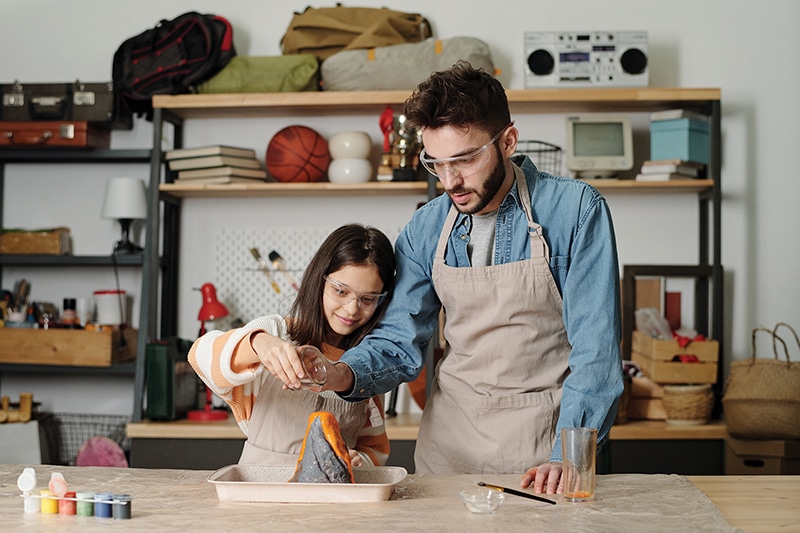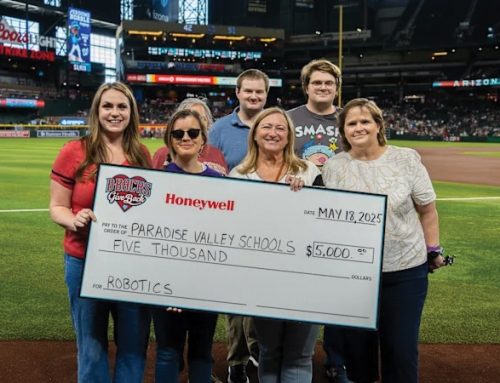As school is back in session, let’s take a moment to explore one of my favorite at-home science experiments. Grab an adult and get ready to get messy!
The hydrogen peroxide volcano demonstrates how a catalyst works in chemistry. Hydrogen peroxide naturally wants to break down into water and oxygen (2H2O2 –› 2H2O + O2). This process usually happens too slowly to be easily perceived and this is where our catalyst comes in. A catalyst is a substance that increases how fast a chemical reaction happens without undergoing any permanent chemical change. In this case, our catalyst is the yeast, which will help to speed up the decomposition process. This volcano is more reactive than a standard vinegar and baking soda volcano; proper protective gear and parental supervision are absolutely necessary!
Here’s What You Need:
• 3 tablespoons of room temperature water in a bowl
• 1 packet dry yeast
• 1 recycled water or soda bottle
• 1 tablespoon of liquid dishwashing soap
• 1 funnel
• 1 stir stick (popsicle stick works fine)
• 1 safety goggles per person participating
• 1 pair of rubber gloves per person participating
• 1/2 cup 3% hydrogen peroxide
• Optional: food coloring
Directions:
• Rinse bottle thoroughly, and place it upright in the sink
• Use the funnel to add hydrogen peroxide to the bottle
• If you would like, you can add five to eight drops of food coloring to the bottle
• Add dishwashing liquid and gently agitate mixture by swirling and not forming bubbles
• Add yeast to the bowl of room temperature water, mix with the stir stick for 30 seconds (it should become the consistency of melted ice cream)
• Use the funnel to add yeast mixture to hydrogen peroxide mixture
• Remove the funnel and watch the reaction
What Do You Observe?
This reaction is exothermic, which means it produces heat. Do you see steam? How big was the reaction? What did the experiment sound like? Could you hear the gasses reacting? Did you smell anything? How long did the reaction last? If you added food coloring, how did the color change over the course of the experiment? Try the experiment again in a different container. Does the size of the container make a difference?
Sari Custer is a lifelong science junkie, Chief Curiosity Officer at Arizona Science Center, and mom to daughter Carson (7). Follow her on Twitter and Instagram @SariOnScience.




